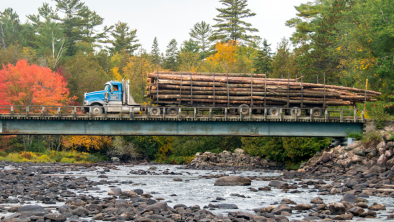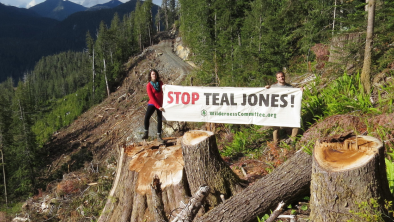B.C. mills are quickly running out of wood
Wednesday, June 27, 2012
The Province

On Jan. 20, Burns Lake received national attention when a horrific explosion and ensuing inferno at the local sawmill killed two mill workers, and triggered the loss of 250 high-paying jobs.
But the town itself was wrestling with deep troubles well before then. The problems were evident years ago, when the forested slopes visible from the town centre turned a rusty red, as the then-epic mountain pine beetle infestation raced through B.C.'s Interior forests.
With an estimated one billion pine trees killed by the beetles and years of accelerated logging in response to the infestation, it was only time before logging companies ran short of trees. Few people in Burns Lake or elsewhere spoke about it, how-ever, hoping against hope that their mill, in their town, would be among the last standing.
That B.C.'s forest industry is in for a shakeup due to a grossly diminished pool of commercially harvest-able trees is a certainty. But there is another related and equally disquieting truth.
Around the time that the beetles arrived outside Burns Lake, Canfor reopened its sawmill in nearby Houston. With its $26.4-million upgrade, Canfor laid claim to the largest sawmill in the world. Lumber production shot up from an already formidable 450 million board feet per year to 600 million. Within a year, Canfor posted record net income of $420.9 million and announced that it would invest $104 million to build a second mill in Vanderhoof, similar in size to its Houston operation. The result: two monster mills with Burns Lake sandwiched between.
It's here that the true challenge confronting our forests and rural communities comes into focus because Canfor was not alone in supersizing its mills. In Quesnel, West Fraser did much the same thing, as did others. The result is milling horsepower that grossly exceeds what the forests can supply.
How much so is spelled out in documents now before a committee of Liberal and NDP MLAs appointed by the legislature to consult com-munities about the future of the so-called "midterm" timber supply.
The documents reveal that in four large forested areas local mills have an appetite for wood that simply can't be sustained. In the Prince George area, sawmills can consume 15.8 million cubic metres of wood per year. (One cubic metre equals one telephone pole). Yet local forests in the near term will only be able to provide 6.4 million cubic metres, or 40 per cent of mill needs.
Around Burns Lake, the picture is even grimmer. Local mills can consume 1.9 million cubic metres, but in the near future forests will only be able to provide for 26 per cent of mill needs. In and around Quesnel and Williams Lake, the picture is only marginally better, with local forests likely to be able to meet only one third of existing sawmill capacity in future years.
Into this volatile mix, the government proposes jettisoning rules that placed modest restrictions on logging activities in a tiny portion of old-growth forests, other forests meant to protect imperilled wildlife species and some forests important to other sectors of the economy such as the tourism industry.
Some MLAs have gone even further, suggesting that Tweedsmuir Park be logged. All in the name of encouraging the owners of the destroyed Burns Lake mill and a second mill that subsequently went up in flames in Prince George to rebuild.
Providing hope to people and communities wracked by horrific events isn't only understandable but essential. But what the provincial government offers instead is false hope - a dangerously back-wards plan. Instead of acknowledging that consumption must align with what the forests can sustain, the government seeks to bend sup-ply to demand. It's a recipe for even more job losses in future years as the government kicks the problem down the road.
What are needed, instead, are policies that maximize social and economic returns from a much smaller resource base.
In Ontario and Quebec, provinces with significantly smaller annual log harvests than B.C., sales of higher-value wood products in 2010 were, respectively, $928 million and $825 million. Sales of similar goods from B.C. that same year were a paltry $345 million. For every 205 cubic metres and 298 cubic metres of trees harvested, respectively, in Ontario and Quebec that year, one full-time forest-industry job was generated. Generating the equivalent job in B.C. required more than four times as much wood.
For years B.C. leaders have known that if we failed to follow these provinces up the value chain, a day of reckoning would come. Now is the time to reverse the trend that sees B.C. lagging behind others, not perpetuate it.
For the sake of our forests and forest communities, getting more value from each log must become the new mantra.
Ben Parfitt is resource policy analyst with the Canadian Centre for Policy Alternatives and author of many forestry reports, including Making the Case for a Carbon Focus and Green Jobs in B.C.'s Forest Industry.


